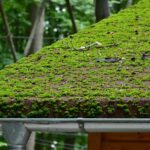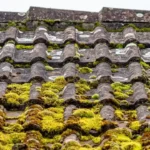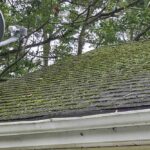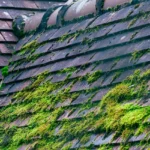Homeowners are increasingly seeking ways to make their homes more sustainable and environmentally friendly. One crucial aspect of an eco-friendly home is an efficient roof drainage system. Implementing sustainable roof drainage solutions not only protects your home from water damage but also contributes to environmental conservation. Here, we explore roof drainage and sustainability tips to help you maintain an eco-friendly home.

Understanding Roof Drainage Systems
A well-functioning roof drainage system is essential for preventing water accumulation and damage. It involves components such as gutters, downspouts, and drains, which work together to channel rainwater away from your home. Proper maintenance of these systems ensures longevity and reduces the risk of costly repairs.
Components of Roof Drainage
The main components of a roof drainage system include gutters, downspouts, and drains. Each part plays a vital role in directing water away from your roof and foundation. Regular cleaning and inspection of these components are necessary to avoid blockages and ensure efficient water flow.
Sustainable Roof Drainage Solutions
Adopting sustainable roof drainage solutions can significantly reduce your home’s environmental impact. Consider installing a rainwater harvesting system to collect and reuse rainwater for gardening and other household purposes. Additionally, choose materials for your drainage system that are durable and recyclable.
Benefits of Sustainable Roof Drainage
Implementing eco-friendly roof drainage solutions offers numerous benefits. It helps conserve water, reduces stormwater runoff, and minimizes your carbon footprint. Moreover, sustainable systems often require less maintenance and have a longer lifespan, ultimately saving you money.
Water Conservation
By capturing and reusing rainwater, you can significantly reduce your household’s water consumption. This not only conserves a precious resource but also lowers your water bills. A rainwater harvesting system is an excellent way to promote water conservation.
Reduction of Stormwater Runoff
Properly designed roof drainage systems reduce stormwater runoff, which can overwhelm local drainage systems and cause flooding. By managing rainwater effectively, you contribute to the overall health of your local ecosystem.
Environmental Impact
Sustainable materials and practices in your roof drainage system reduce your home’s environmental impact. Choosing recyclable materials and reducing waste contribute to a healthier planet.
Maintaining Your Roof Drainage System
Regular maintenance is crucial for the longevity and efficiency of your roof drainage system. This includes cleaning gutters, checking for leaks, and ensuring that downspouts and drains are clear of debris.
Gutter Cleaning
Regular gutter cleaning prevents clogs and water overflow. It is recommended to clean your gutters at least twice a year, in spring and fall, to remove leaves, twigs, and other debris.
Inspection for Leaks
Inspect your roof drainage system for leaks, especially after heavy rainfall. Promptly address any leaks to prevent water damage to your home’s interior and exterior.
Clearing Downspouts and Drains
Ensure that downspouts and drains are free from blockages. This allows rainwater to flow smoothly away from your home, reducing the risk of foundation damage.
Innovative Roof Drainage Technologies
The advancement of technology has introduced innovative solutions for roof drainage and sustainability. Smart drainage systems equipped with sensors can detect blockages and notify homeowners for timely maintenance.
Smart Drainage Systems
Smart drainage systems use sensors to monitor water flow and detect potential issues. These systems provide real-time alerts, allowing homeowners to address problems before they escalate.
Permeable Paving
Consider installing permeable paving around your home to enhance drainage and reduce runoff. This material allows water to seep through, minimizing the strain on your roof drainage system.
Green Roofs
Green roofs are a sustainable option for managing rainwater and improving insulation. They absorb rainwater, reduce runoff, and provide a habitat for wildlife, contributing to biodiversity.
Integrating Sustainability with Roof Design
Integrating sustainability into your roof design enhances your home’s eco-friendliness. Consider materials, design elements, and technologies that promote energy efficiency and environmental conservation.
Energy-Efficient Materials
Opt for energy-efficient roofing materials, such as metal or cool roofs, which reflect more sunlight and absorb less heat. This reduces your home’s energy consumption and contributes to sustainability.
Sustainable Design Elements
Incorporate sustainable design elements, such as solar panels and skylights, into your roof. These additions enhance energy efficiency and reduce reliance on non-renewable resources.
Technological Innovations
Stay informed about technological innovations in roofing, such as self-healing materials and solar shingles, which offer both sustainability and durability.
Community and Environmental Benefits
Eco-friendly roof drainage systems benefit not only individual homeowners but also the wider community and environment. By adopting sustainable practices, you contribute to a healthier planet and set an example for others.
Community Impact
Your efforts to implement sustainable roof drainage solutions can inspire others in your community to do the same, creating a collective impact on environmental conservation.
Ecosystem Health
Proper rainwater management helps maintain local ecosystems by reducing pollution and promoting biodiversity. Protecting natural habitats benefits both wildlife and human communities.
Long-Term Sustainability
Investing in sustainable roof drainage is a step towards long-term sustainability. By making environmentally conscious choices, you contribute to a brighter future for generations to come.
Conclusion
Incorporating roof drainage and sustainability tips into your home design not only protects your property but also supports environmental conservation. By choosing sustainable materials, technologies, and practices, you can create a more eco-friendly home that benefits both you and the planet. For more insights on managing roof drainage effectively, check out this comprehensive guide. Additionally, learn how to ensure proper roof water runoff to prevent water damage.

FAQs
What are the key components of a roof drainage system?
The key components include gutters, downspouts, and drains, which work together to channel water away from your home.
How can I make my roof drainage system more sustainable?
Consider installing rainwater harvesting systems and using durable, recyclable materials for your drainage system.
Why is regular maintenance of the roof drainage system important?
Regular maintenance prevents clogs and leaks, ensuring the efficient functioning of the system and protecting your home from water damage.
This article contains affiliate links. We may earn a commission at no extra cost to you.








